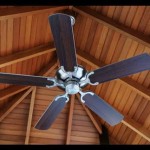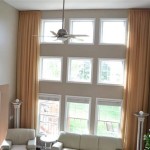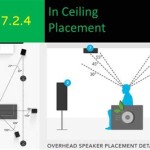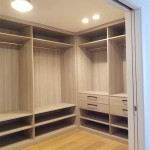Illuminating Spaces Devoid of Overhead Fixtures: A Guide to Lighting Rooms Without Ceiling Lights
Adequate illumination is crucial for functionality and ambiance within any living space. However, many rooms, particularly older homes or apartments, may lack built-in ceiling lights. Situations like rented properties where structural alterations are restricted, rooms with low ceilings, or personal aesthetic preferences can also dictate the absence of traditional overhead lighting. In such scenarios, alternative lighting solutions become essential to achieve the desired level of brightness and create a welcoming atmosphere.
This article explores various practical and aesthetically pleasing strategies for effectively lighting rooms without relying on ceiling fixtures. It details different types of lamps, placement considerations, and creative techniques to maximize illumination and enhance the overall appeal of a room. It also addresses the importance of considering the room's purpose, size, and existing décor when selecting and arranging alternative lighting options.
Optimizing Light with Floor Lamps
Floor lamps stand out as a versatile and readily available solution for illuminating rooms lacking ceiling lights. They offer a wide range of styles, sizes, and light output, making them adaptable to various room designs and lighting necessities. Different types of floor lamps cater to specific needs. For instance, torchiere lamps project light upwards, creating a soft, ambient glow that can effectively brighten a room by bouncing light off the ceiling. This technique is exceptionally useful in spaces with lighter-colored ceilings, as they reflect light more efficiently.
Arc lamps, characterized by their curved design, provide directional light that can be positioned over furniture, such as sofas or dining tables. This allows for focused illumination for reading, crafting, or dining. Task floor lamps, with adjustable arms and shades, are ideal for providing direct light for specific activities like reading or sewing. Their adjustability allows for precise control over the light direction and intensity.
Placement of floor lamps is crucial for maximizing their effectiveness. Strategically placing floor lamps in corners can eliminate shadows and visually expand the room. Placing a floor lamp behind a sofa or armchair provides convenient reading light without occupying valuable table space. When using multiple floor lamps, varying their heights and styles can create a more layered and dynamic lighting scheme. It is important to consider the lamp's wattage and light output to ensure sufficient brightness without creating glare. Opting for lamps with dimmer switches provides flexibility in adjusting the light intensity to suit different moods and activities.
Leveraging Table Lamps and Desk Lamps
Table lamps and desk lamps offer another flexible and accessible method for introducing light into a room without ceiling fixtures. These lamps are particularly well-suited for providing localized illumination on surfaces like side tables, desks, and bookshelves. They come in an array of styles, from classic to contemporary, allowing integration with diverse interior design aesthetics. By carefully selecting the type and placement of table and desk lamps, one can create a welcoming and functional lighting scheme tailored to specific needs.
For living rooms, table lamps placed on end tables or consoles create a warm and inviting ambiance. Pairing lamps on either side of a sofa or bed provides balanced illumination and a sense of symmetry. In bedrooms, bedside table lamps are essential for reading and creating a relaxing atmosphere. The size and style of the lamps should complement the furniture and overall decor of the room.
Desk lamps are indispensable for providing focused light in home offices or study areas. An adjustable desk lamp with a flexible arm allows for directing light exactly where it is needed. Select a desk lamp with a brightness level appropriate for the task at hand, whether it's reading, writing, or working on a computer. Consider the color temperature of the light as well; cooler, blue-toned light is generally recommended for tasks requiring high concentration, while warmer, yellow-toned light is more suitable for creating a relaxed atmosphere.
When using table and desk lamps, it's important to consider the height of the lampshade in relation to the surface it sits on. The bottom of the lampshade should be at eye level when seated to prevent glare. Also, ensure that the lamps are spaced appropriately to provide even illumination throughout the room. Avoid overcrowding surfaces with too many lamps, as this can create a cluttered and overwhelming effect.
Creative Lighting Techniques and Alternatives
Beyond traditional lamps, numerous creative lighting techniques and alternatives can effectively illuminate rooms without ceiling lights. These options often provide unique aesthetic appeal and address specific lighting challenges. String lights, for example, can create a whimsical and festive atmosphere, particularly in bedrooms or living rooms. When draped along walls, windows, or furniture, string lights provide a soft, diffused glow that adds warmth and charm to the space.
Wall sconces offer a more permanent and elegant solution for wall-mounted lighting. While requiring installation, wall sconces can provide both ambient and task lighting. They are particularly useful in hallways, stairwells, or bathrooms where floor or table space is limited. Wall sconces come in a variety of styles, from traditional to modern, and can be used to highlight architectural features or artwork.
Picture lights are designed to illuminate artwork and photographs, adding a touch of sophistication to a room. These lights are typically mounted above the artwork and provide focused illumination that highlights the colors and details of the piece. Picture lights can be a great way to draw attention to focal points in a room and create a museum-like atmosphere.
Under-cabinet lighting is an excellent option for kitchens or workspaces where task lighting is essential. These lights are typically installed beneath cabinets or shelves and provide focused illumination for countertops or work surfaces. Under-cabinet lighting can also be used to create a subtle ambient glow in kitchens or bathrooms. Battery-operated LED strip lights are another flexible option that can be easily installed in various locations without the need for wiring.
Mirrors play a crucial role in maximizing the effect of available light. Strategically placing mirrors can help reflect and distribute light throughout the room, making it appear brighter and more spacious. Position mirrors opposite windows or lamps to amplify the light and create a more open feeling. The size and shape of the mirror should be proportionate to the room's size and décor. A large mirror can create a dramatic focal point, while smaller mirrors can be used to add subtle accents and reflect light into darker corners. The type of mirror also matters; a beveled edge mirror tends to diffuse light more, while a flat mirror provides a sharper reflection.
Finally, smart lighting systems offer advanced control and customization options. Smart bulbs can be controlled remotely using a smartphone or voice assistant, allowing for adjusting the brightness, color temperature, and even scheduling lighting changes. Smart lighting can enhance the convenience and energy efficiency of the lighting scheme. With a smart hub, integrating multiple lamps and fixtures into a single controlled system is straightforward. This provides greater flexibility in creating a customized lighting scheme that adapts to different needs. The energy efficiency of LED smart bulbs also leads to significant savings on electricity bills over time.

How To Light A Living Room With No Overhead Lighting

Creative Ideas For Lighting Rooms Without Ceiling Lights Lightlady Studio

How To Light A Living Room With No Overhead Lighting

How To Best Light A Living Room Using No Overhead Nestrs

How To Best Light A Living Room Using No Overhead Nestrs

How To Light A Room With No Overhead Lighting 12 Best Options

How To Light A Room With No Overhead Ceiling Lighting Modern Place

16 Ceiling Light Ideas With No Need For False S

Creative Ideas For Lighting Rooms Without Ceiling Lights Lightlady Studio

13 Bright Ideas For Living Rooms With No Overhead Lighting








